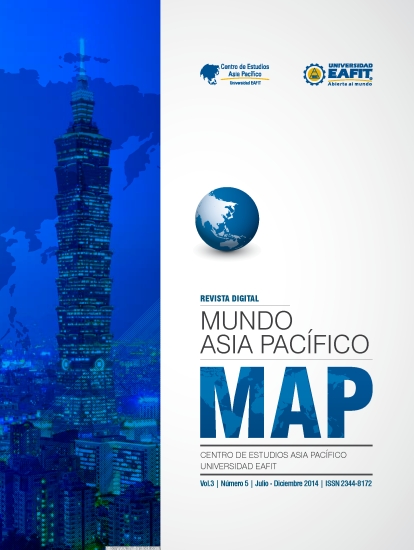Hanok: arquitectura en armonía con la naturaleza
Main Article Content
Keywords
Hanok, arquitectura, Confucianismo, Taoísmo, modernismo arquitectónico.
Resumen
Este artículo pretende facilitar un acercamiento a la cultura coreana por medio de la descripción de la arquitectura tradicional del Hanok y señalar su especial consideración y aprovechamiento del entorno natural para adecuarlo a las necesidades de quien lo habita. Hanok es el término que se utiliza para referirse a una casa construida en el estilo arquitectónico tradicional coreano que se caracteriza por el uso de materiales naturales como madera, papel, barro y piedras; y por sus procesos constructivos que logran un tipo de vivienda ecológico cuyos rasgos más significativos tuvieron y siguen teniendo influencia en escuelas más recientes de arquitectura. También el Hanok es un tipo de construcción que ejemplifica algunos valores presentes en la tradición coreana como el confucianismo y el taoísmo.
Descargas
Referencias
A. Cardno, C. (2014). http://www.asce.org/. Obtenido de http://www.asce.org/CEMagazine/ArticleNs.aspx?id=23622330353#.VFvRdPnF-VA
Burckhardpartner. (2012). http://www.burckhardtpartner.ch/. Obtenido de http://www.burckhardtpartner.ch/tl_files/content/katalog/news/2012/Press-Release_Burckhardt+Partner_wins_competition_Swiss_Embassy_Seoul_121204.pdf
choeunart. (s.f.). Hanji - Korean Hand-made Paper. Obtenido de http://www.choeunart.com/Page/2864/0-1/Hanji+(%ED%95%9C%EC%A7%80).aspx
Choi, K.-R., & Yu, C. (2011). Sustainable design for Asian Housings: Traditional culture, lighting and aesthetics. Artículo . Obtenido de http://ibe.sagepub.com/content/20/5/485.full.pdf+html
Cultural Heritage Administration of Korea. (s.f.). english.cha.go.kr. Obtenido de http://english.cha.go.kr/english/search/search_new.jsp
Dunbar, J. (Febrero de 2012). visitkorea.or.kr. (K. T. Organization, Ed.) Obtenido de http://spanish.korea.net/NewsFocus/Travel/view?articleId=99943
Hanstyle. (s.f.). HANSTYLE KOREA THE SENSE. Obtenido de http://www.han-style.com/english/hanok/meaning.jsp
Jaekee, D. (2010). http://www.list.or.kr/. Recuperado el 2014, de http://www.list.or.kr/articles/article_view.htm?Div1=11&Idx=441
Kim, B. r. (1999). Natural Perspective Revealed in Traditional Korean Architecture. Obtenido de http://koreana.kf.or.kr/main.asp?volumn=13&no=3&lang=
Kim, B.-r. (2013). Patios y jardines, cómo los coreanos conviven con la naturaleza. Koreana .
Kim, S. (2009). Department of architectural engineering . Kyung Hee University .
Korea tourism organization. (s.f.). Official site of Korea Tourism Org.: Philosophy . Obtenido de Hanok traditional houses : http://english.visitkorea.or.kr/enu/AC/AC_EN_4_5_2_1.jsp
Korean culture and information service. (2011). Obtenido de http://www.kocis.go.kr/
Lee, K. (2011). ECONOMIC VALUE OF HANOK REGENERATION PROJECT IN SEOUL. Paris: ICOMOS. Obtenido de http://openarchive.icomos.org/1293/1/IV-2-Article4_Lee.pdf
Nilesh, P. (s.f.). http://theculturetrip.com/. Obtenido de http://theculturetrip.com/asia/south-korea/articles/hanok-the-forerunner-to-eco-architecture-/
Sook, P. H. (s.f.). The Korea foundation. (K. Foundation, Ed.) Koreana. Obtenido de http://www.koreana.or.kr/months/news_view.asp?b_idx=1129&lang=ru/&page_type=list#k
Tucker, & Berthrong. (1998). Confucianismo y ecología.
Window on Korean culture (2010). [Película].www.flickr.com/photos/marco2001/2704435119/in/photostream

